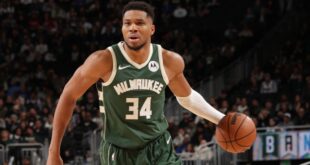•Subscribe to NBA League Pass NOW
Thursday’s announcement regarding San Antonio’s Victor Wembanyama, who was diagnosed with deep vein thrombosis (DVT) and will miss the remainder of the 2024-25 NBA season, has reverberated throughout the league, leaving fans and the Spurs organization in shock, along with the All-Star’s global following.
This development raises an important question: What exactly is deep vein thrombosis?
Here’s an overview of this condition, its potential causes, treatment options, and some historical instances where young athletes have faced similar challenges.
Deep vein thrombosis occurs when a blood clot forms in a deep vein, often in the lower leg, thigh, pelvis, or arm, as outlined by WebMD.com. This condition can lead to swelling and pain, although occasionally, there may be no noticeable symptoms at all.
DVT poses serious risks, as these clots can dislodge and travel through the bloodstream to the lungs, resulting in a pulmonary embolism, which obstructs blood flow.
The 7-foot-3 French player was diagnosed soon after returning to San Antonio from the All-Star weekend. As a result, the Spurs will have to keep the 21-year-old off the court for the rest of the 2024-25 campaign. Currently, the Spurs (23-29) have 30 regular-season games remaining, commencing with a matchup against Phoenix on Thursday night (9:30 p.m. ET, TNT). They find themselves in 12th place in the Western Conference, with their regular-season finale scheduled for April 13 against Toronto.
pic.twitter.com/rTlFYch2Rr
— San Antonio Spurs (@spurs)February 20, 2025
Most DVT cases involve clots in the legs, but they can also occur in the shoulder, which is less frequent but certainly possible.
“There are biological factors that can make a person’s blood more prone to clotting,” remarked Dr. Jonathan Reiner, a professor of Medicine at the George Washington University School of Medicine & Health Sciences and a specialist in interventional cardiology, as well as a medical analyst for CNN.
“There may also be mechanical factors, especially for an NBA athlete’s shoulder. The act of aggressively jamming a basketball involves a lot of contact and collisions, which can potentially damage a vein,” he explained.
Dr. Reiner added that bleeding in the shoulder due to prior injuries could create a hematoma that compresses a vein.
Furthermore, he mentioned a condition called Thoracic Outlet Syndrome (TOS), which can lead to blood clots when veins become trapped or injured beneath the collarbone.
Physical therapy and pain management can be helpful for TOS, but the most common approaches to treat DVT involve blood thinners or surgery.
Blood thinners, however, can be risky for athletes in contact sports due to the increased likelihood of bleeding from injuries.
Dr. Evan Jeffries, a physical therapist and injury insider for both the NBA and NFL, informed Newsweek that “The important takeaway is that it was detected early, preventing the clots from dislodging and affecting vital organs like the brain, heart, or lungs. He’ll be on blood thinners for at least three months and will need to show negative scans to return to playing basketball.”
Neither Dr. Reiner nor Dr. Jeffries suggested that Wembanyama’s condition poses a threat to his playing career or presents a life-threatening situation, provided he receives appropriate care.
There are examples of varying outcomes. One of the most notable is Hall of Fame forward Chris Bosh, whose career ended prematurely in 2016 after he was diagnosed with clots that had traveled to his lungs. He missed the latter part of the 2014-15 season and played only 53 games in 2015-16. Despite seeking medical clearance for a comeback, he ultimately retired in 2019.
In a similar instance, Brandon Ingram, who was traded earlier this month from the New Orleans Pelicans to the Toronto Raptors, was diagnosed with TOS at age 21. Following surgery to treat the DVT, he made a successful return, earning an All-Star selection the next season.
Former Cleveland Cavaliers center Anderson Varejao was sidelined for the second half of the 2012-13 season after a blood clot formed post-quadriceps surgery. He was placed on blood thinners and returned the following year.
Detroit Pistons guard/forward Ausar Thompson was unable to complete last season and missed the first 18 games of the current season due to blood clots. He was finally cleared by the league’s Fitness-to-Play panel before resuming play in late November.
Christian Koloko, now with the Lakers, faced blood clots that ruled him out for the entirety of the 2023-24 season.
DVT has impacted athletes across various sports, including those in the NHL and NFL, who have successfully recovered. Serena Williams, often regarded as one of the greatest tennis players of all time, was diagnosed with a pulmonary embolism in 2011 but managed to return to her winning form.
* * *
Steve Aschburner has been covering the NBA since 1980. You can contact him via email, explore his archives, and follow him on X.
The opinions expressed in this article do not necessarily represent the views of the NBA, its teams, or Warner Bros. Discovery.
 NBA News NBA News, Match Reports and Updates
NBA News NBA News, Match Reports and Updates



